To places unknown
Julie and I had a fantastic time exploring parts of the United States in 2017 during the first continent of Follow the Sun. From California we looped south across the continent to Florida and then more or less up the east coast into Canada. That was great but the US is a huge place and we barely touched the surface of cool places to visit. So on this final leg of our journey we were determined to see as many new spots as possible. And it was a long list.
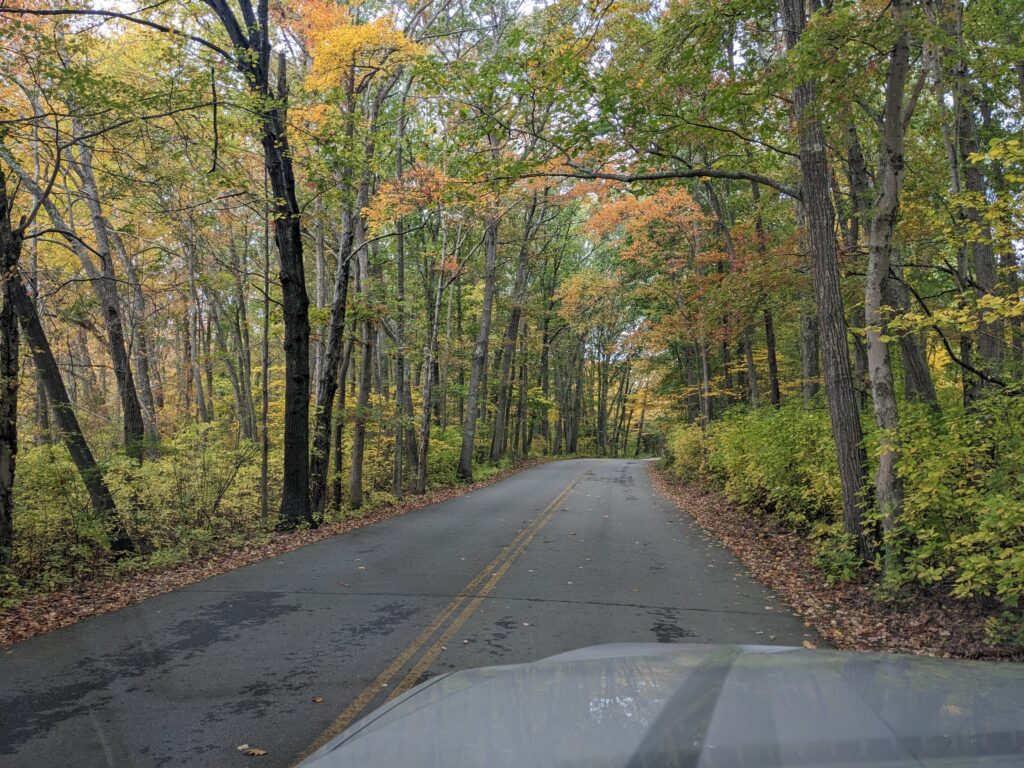
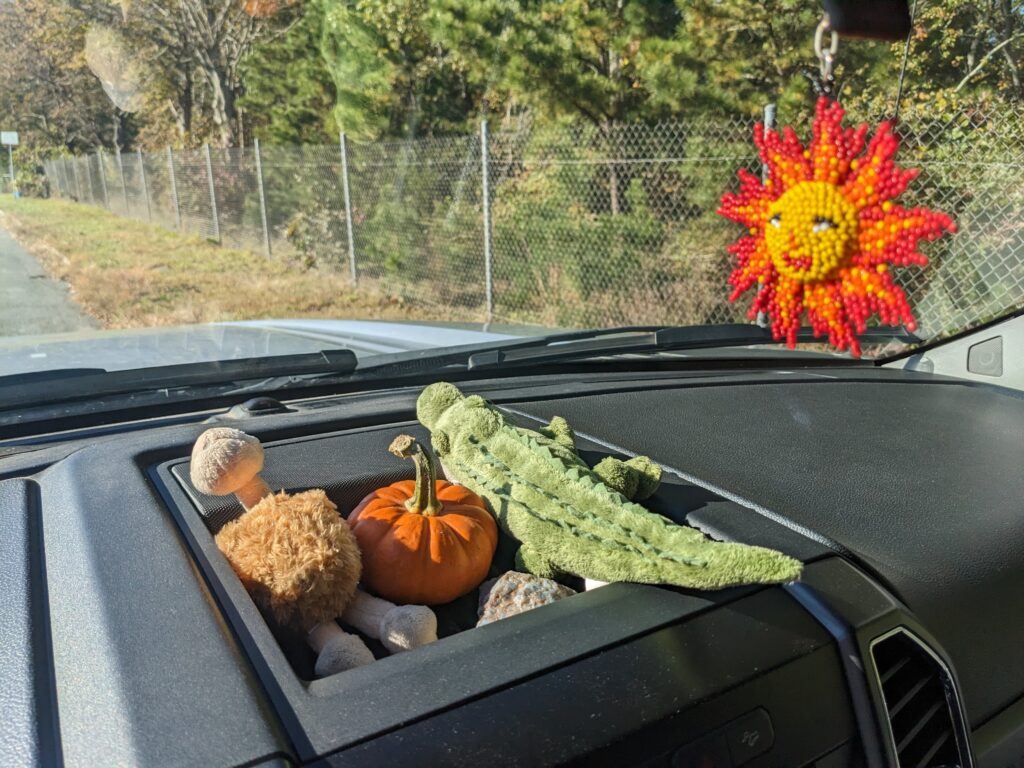
We wanted to explore a bit more of New England that we didn’t see last time and this was a perfect time of year with the beautiful fall colours and the absent crowds. We followed our trajectory of moving east and north from Connecticut with our first destination being the tip of Cape Cod in Massachusetts.
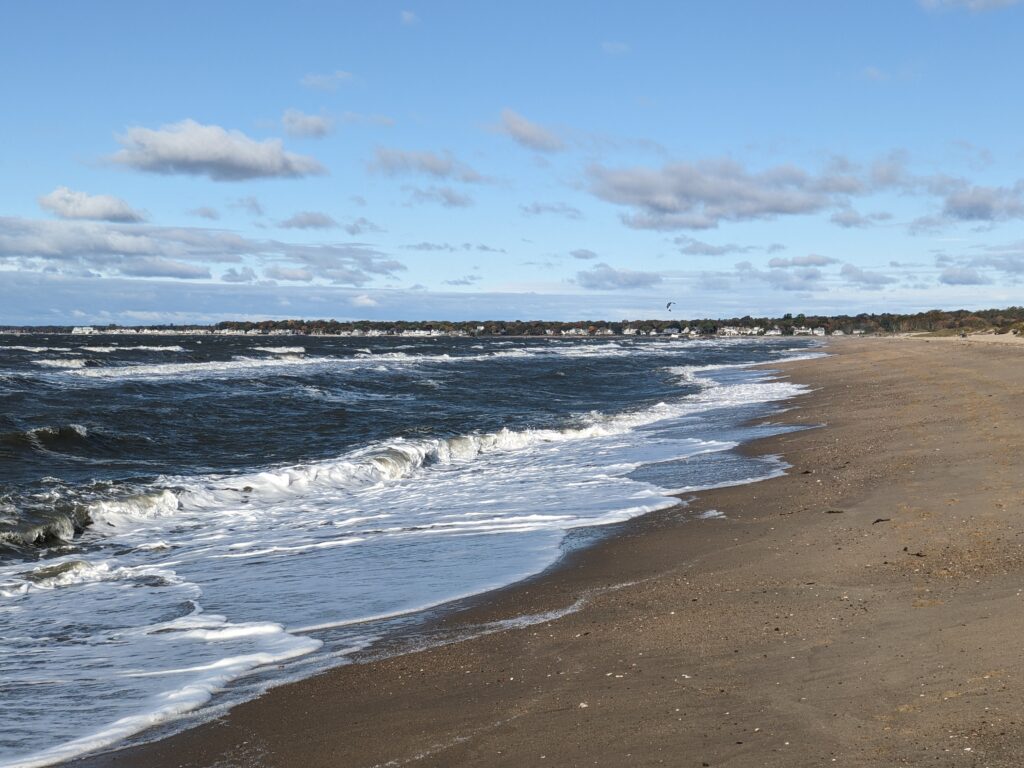
Connecticut is a very small state but it has an astonishing 110 state parks, obviously making a major commitment to preserving special places and providing infrastructure for people to enjoy them. We followed Highway 1 along the coast which forms the northern boundary of Long Island Sound, stopping to explore Hammonasset State Park and Rocky Neck State Park. Both parks protected beautiful shorelines and wetlands plus provided massive, huge campgrounds and visitor facilities for people to use. We were mighty impressed.
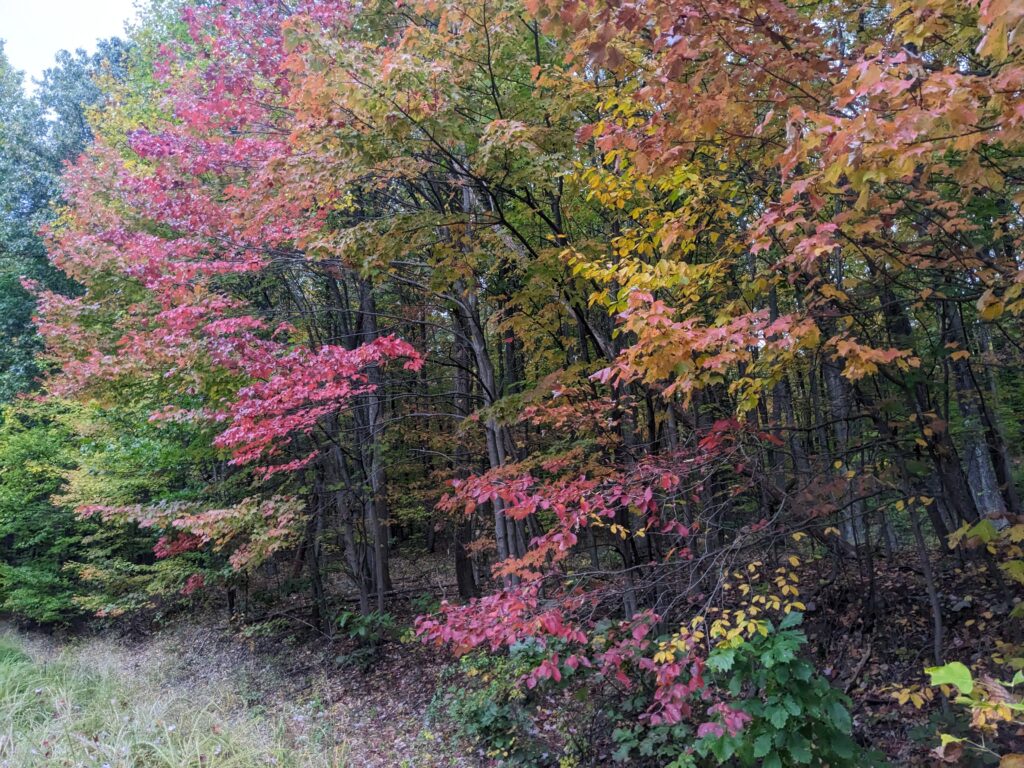
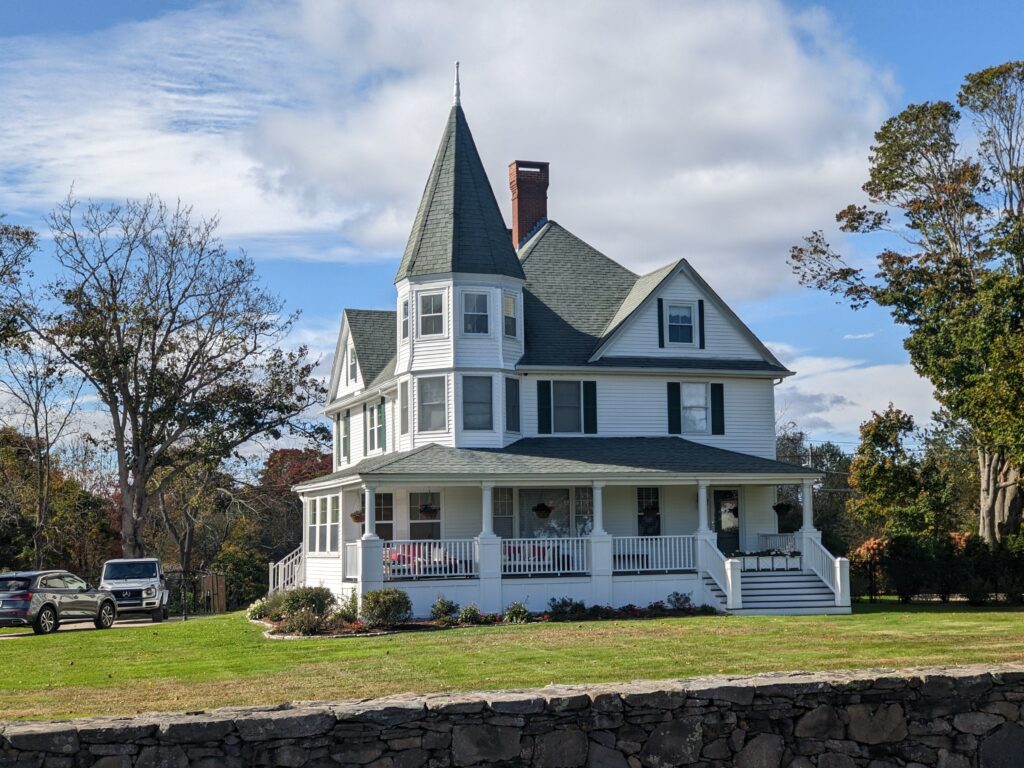
It didn’t take long for Connecticut to run out and the next state popped up – Rhode Island. First of all, Rhode Island is not an island but it is the smallest state in the US, more like a postage stamp compared to large states like Texas or Alaska. Under grey clouds and a cold breeze we stopped at the long beach at Narragansett for lunch and watched locals in full wetsuits try to surf the tiny waves. Onward we pushed, following the coast to Rhode Island’s most famous city – Newport.
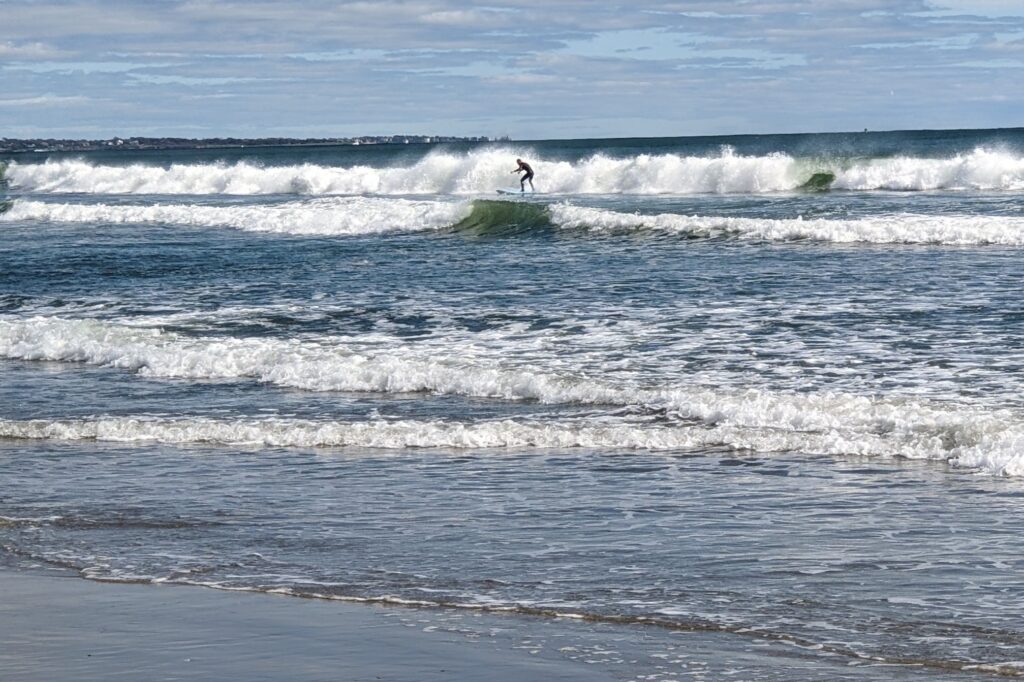
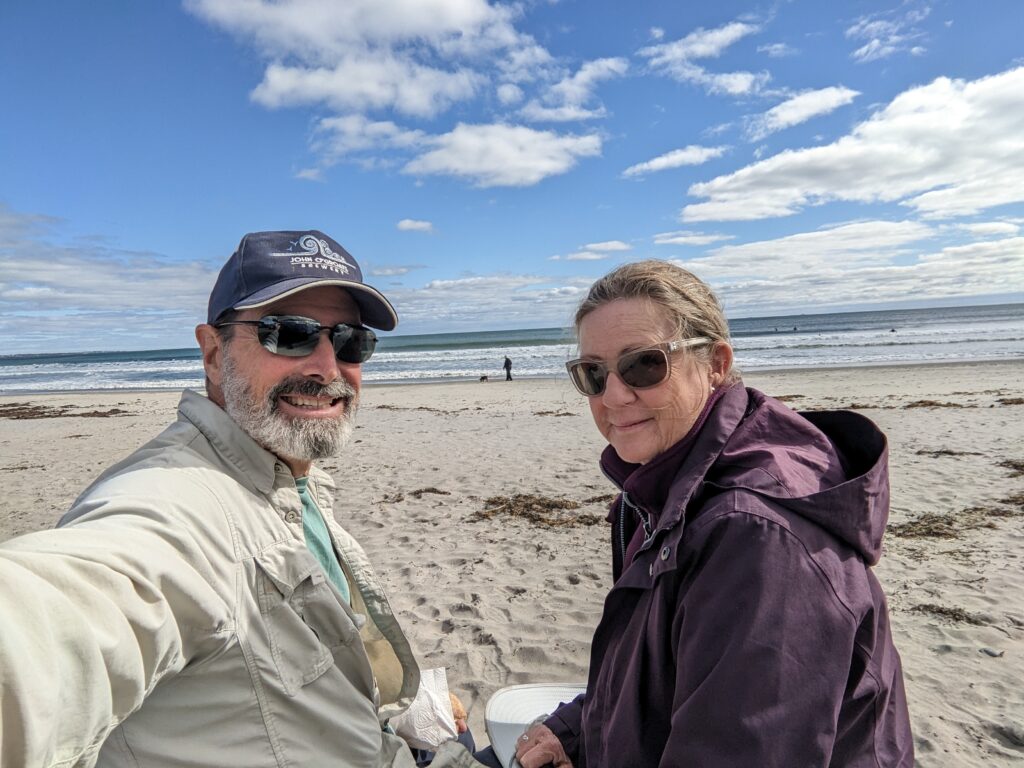
Newport is a super upmarket community on a handsome bay sporting some of the most amazing mansions we’ve ever seen, a beautiful coastline and an historic fort. But it is probably most well known for being the former long-time home of the America’s Cup and could probably claim to be the sailing capital of America.
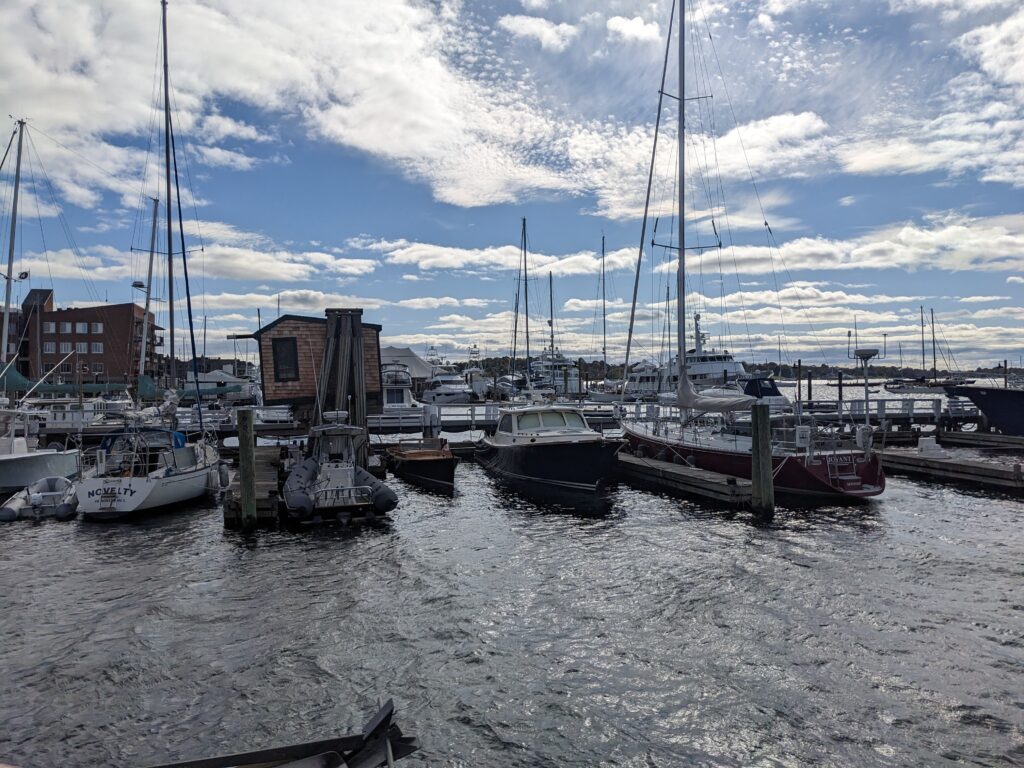
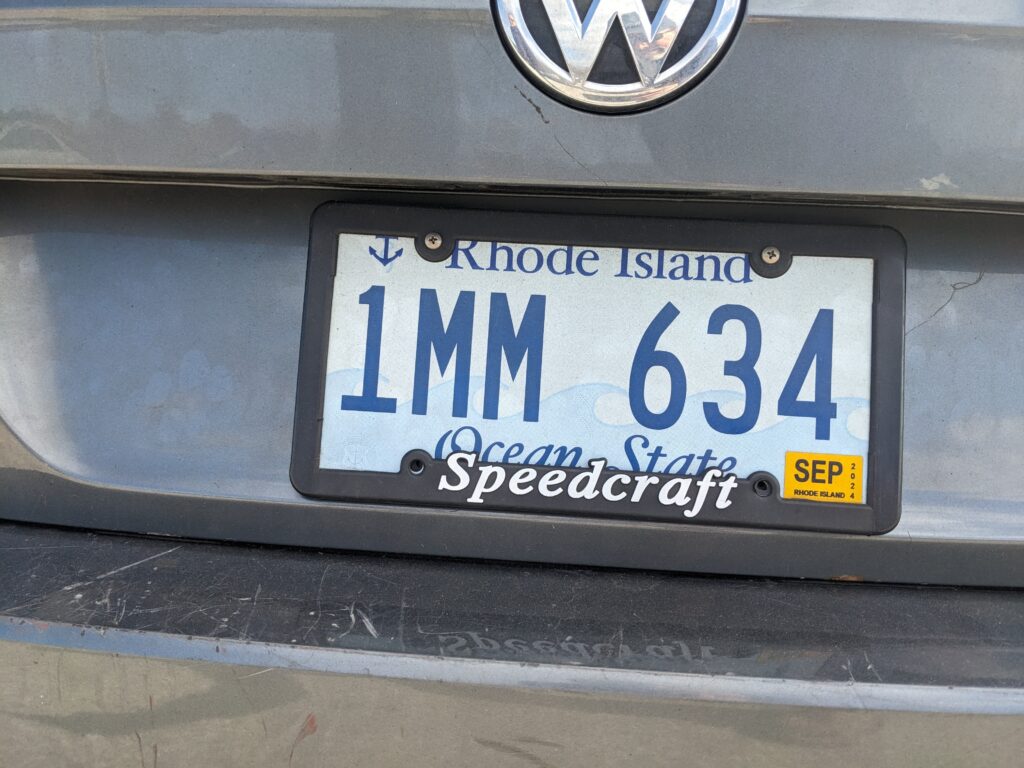
We checked out the marina, drove along Bellevue Ave to see some of the mansions, although most were hidden behind high hedges and iron gates, and along the coast to Fort Adams. This is rarefied air for most Americans with homes featuring both quality and quantity with stratospheric prices to boot. We loved the visit but it wasn’t exactly our thing.
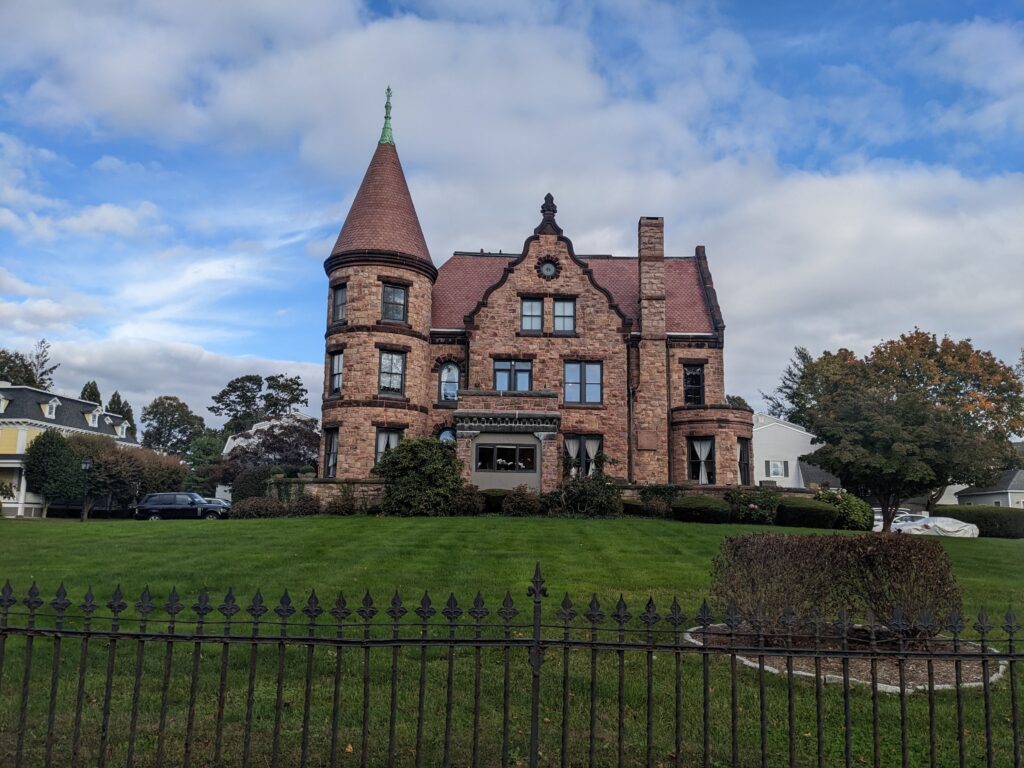
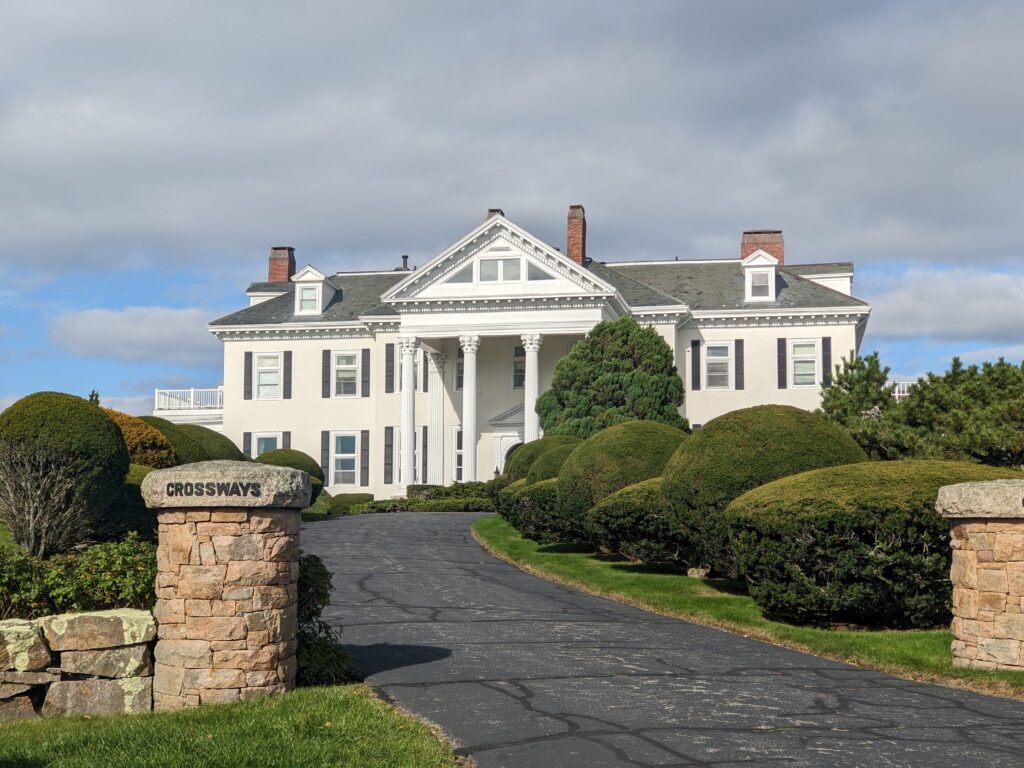
We followed our nose eastward until we crossed over into Massachusetts and settled for the night in a carpark – another carpark – at Town Neck Beach in the town of Sandwich which is on the peninsula of Cape Cod.
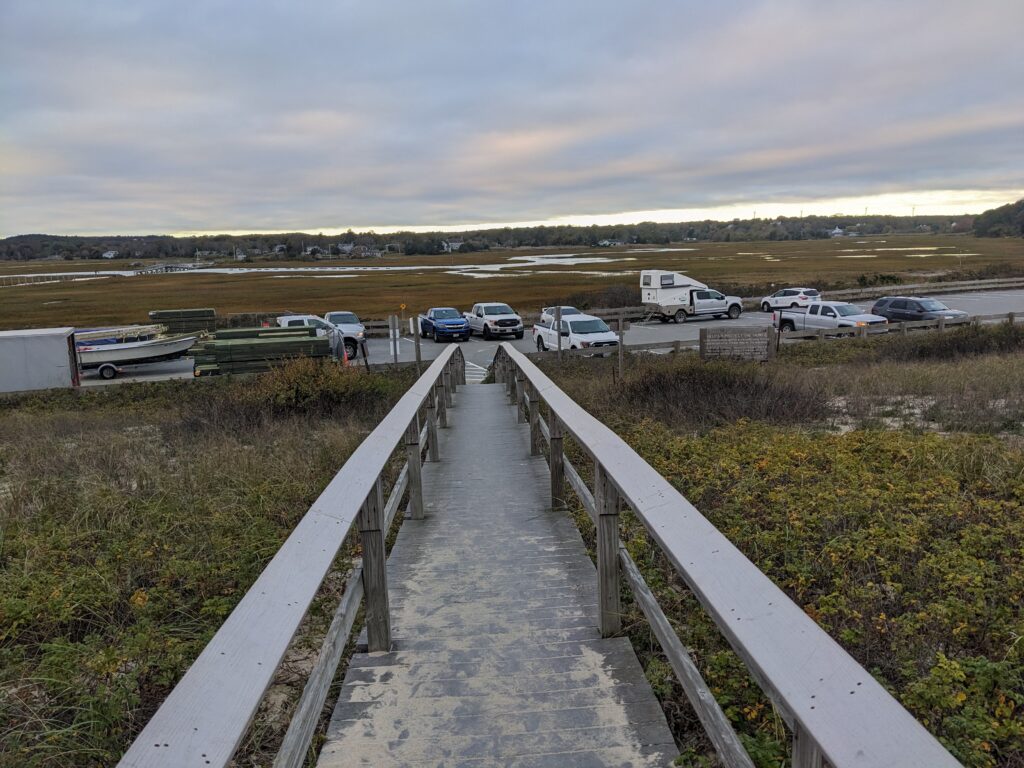
It was another cold and windy night on the shoreline and we stayed snugly indoors. Curiously, there were bulldozers reshaping the sand dunes that hug the shoreline which ran all night near us. The next morning I spoke to probably half a dozen people about the work they’re doing, Tramp and our travels, politics, the cost of fuel, everything. I love those impromptu talks, learning all sorts of things, almost always initiated because of our handsome beast.
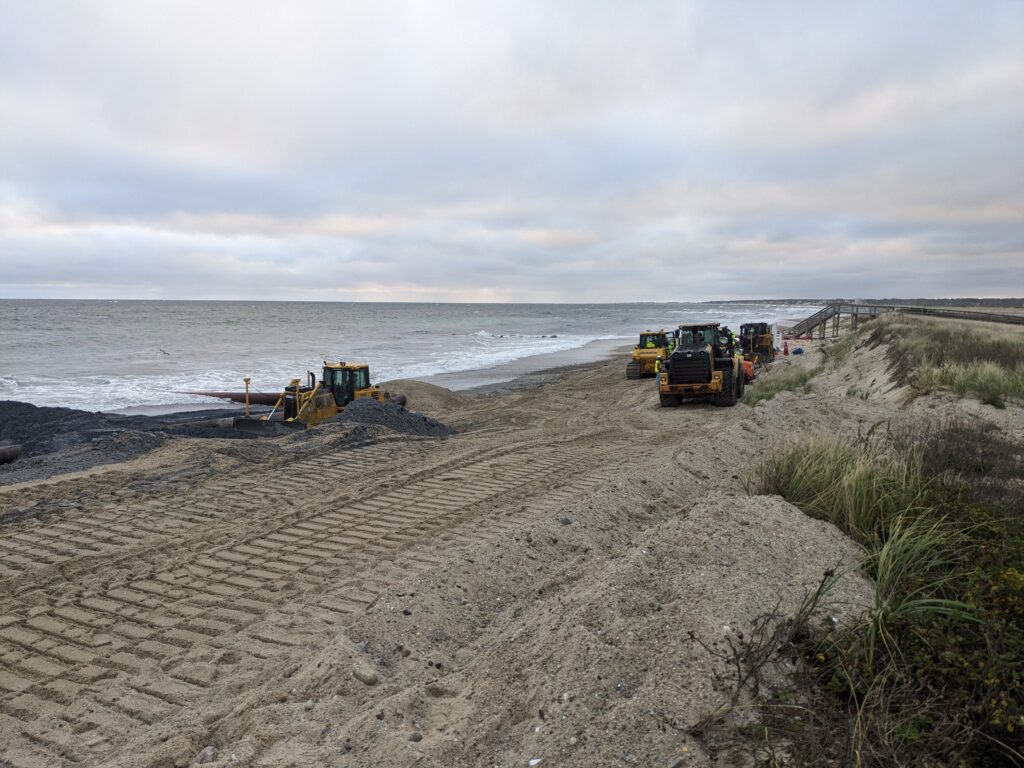
We followed Highway 6 as it split the middle of Cape Cod and made it’s way to the very tip. Cape Cod features an endless supply of sand dunes and salt marshes, usually separating each other, with some rugged long beaches on the ocean side and many upmarket communities sprinkled about. We finally made the very tip where Pilgrims on the Mayflower briefly made shore in 1620 before realising anywhere was better than here and pushing on. It was cold and blustery, loaded with offseason coastal atmosphere and very cool.
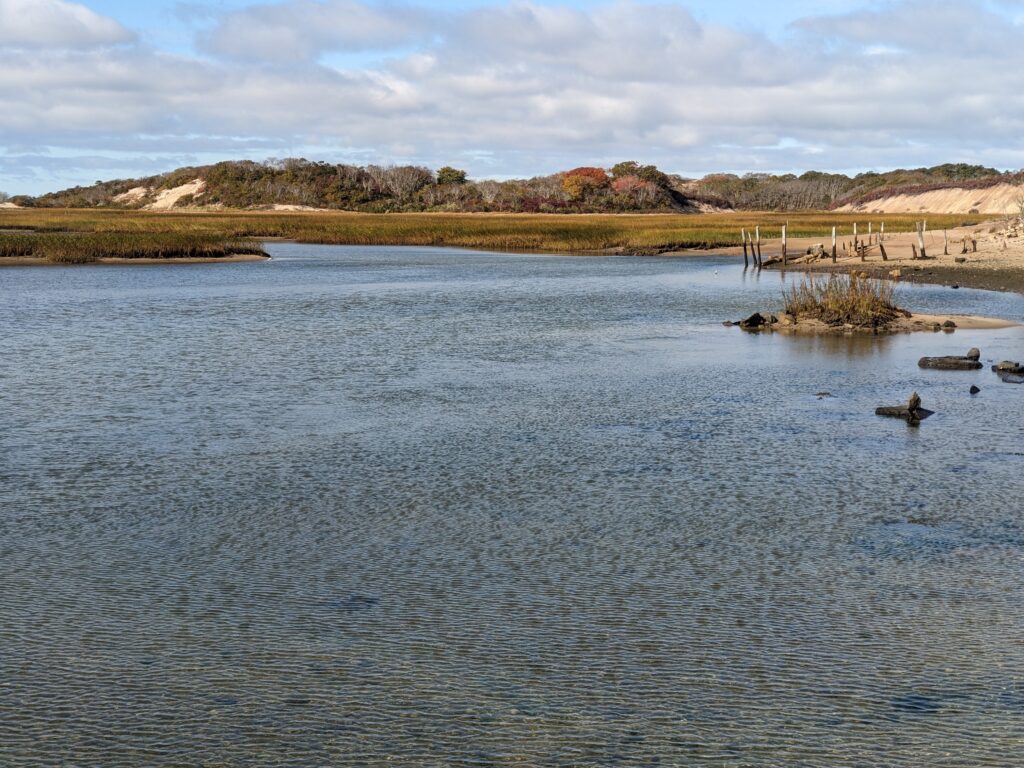
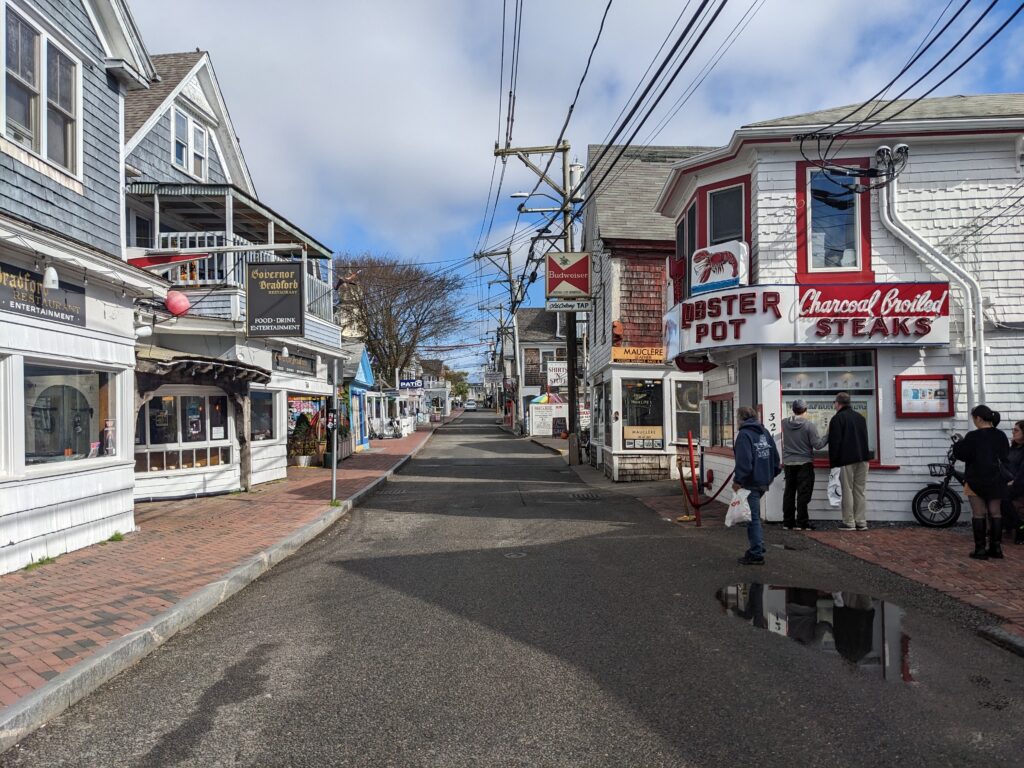
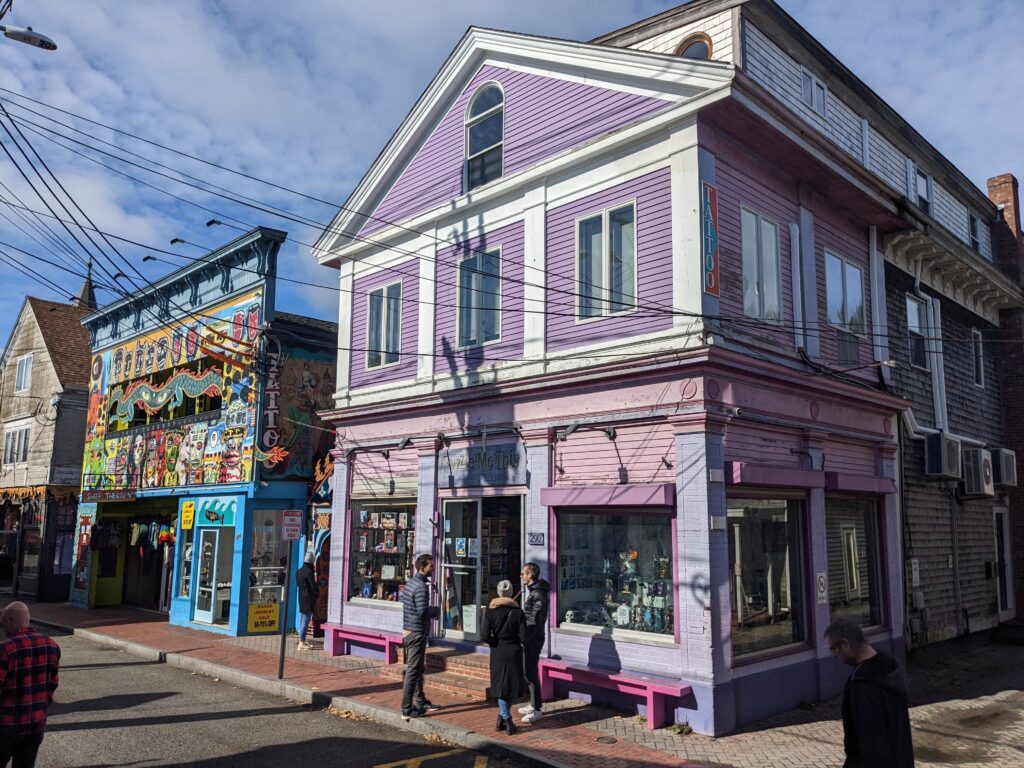
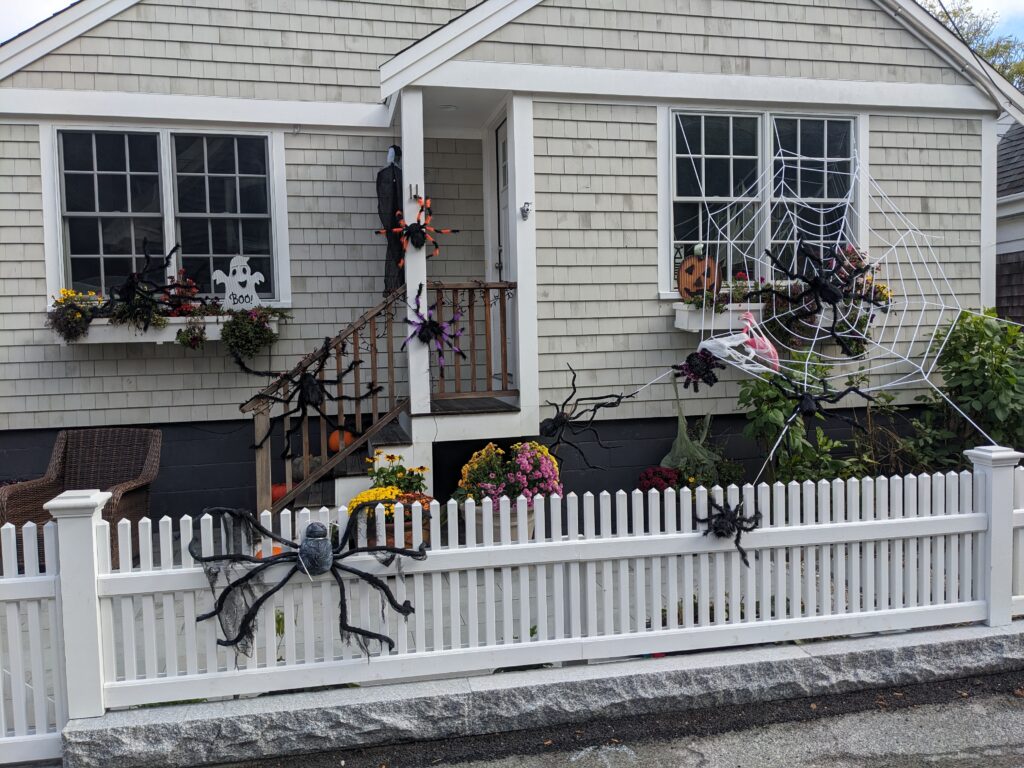
This also marked the eastern-most point of our journey in the US and from here we pointed Tramp westward with the idea to end up in California in less than four weeks. And so we headed off, stopping to check out the wild and wonderful ocean-facing beaches of Cape Cod and more of the wonderful homes for people who live here.
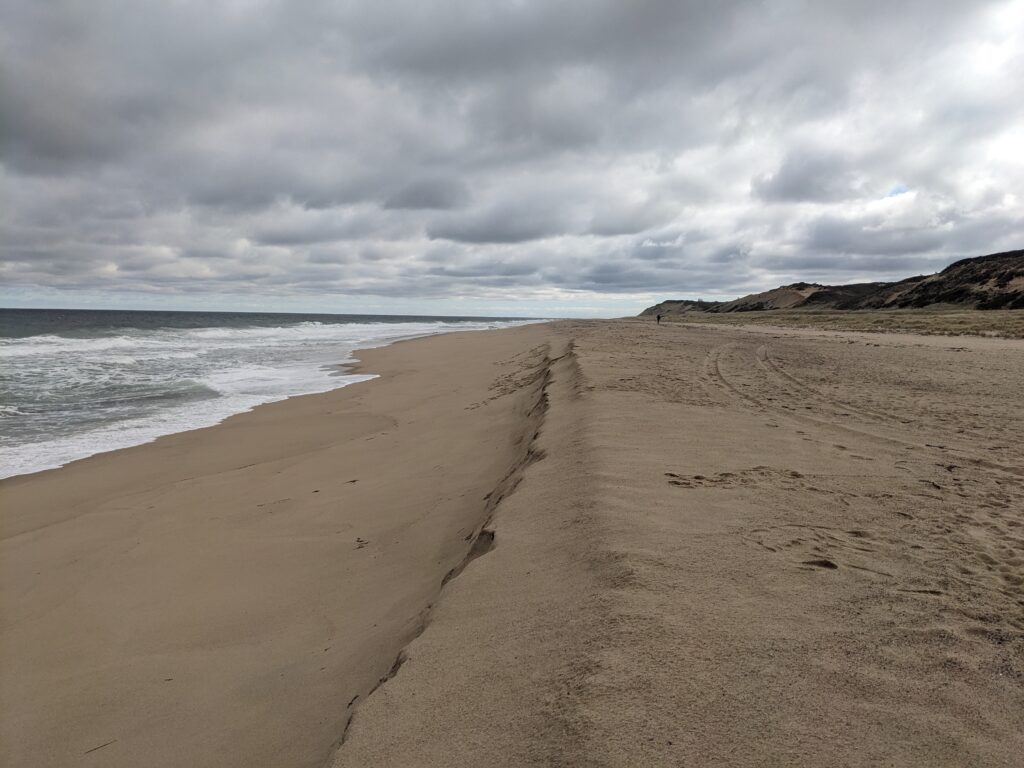
We made our way to Plymouth which every American school child will tell you is where the Pilgrims landed from the Mayflower in December 1620. And Plymouth Rock, which symbolically, if not literally, marks the spot, is still there, more or less, as an enduring symbol of America’s birth on this continent. And as it happens, a recreation of the Mayflower is permanently anchored nearby for visitors to get a glimpse of the harsh life these early settlers had on their crossing of the Atlantic. And a final fun fact here: 102 pilgrims arrived at Plymouth Rock but only 50 survived that first harsh winter. A very tough gig.
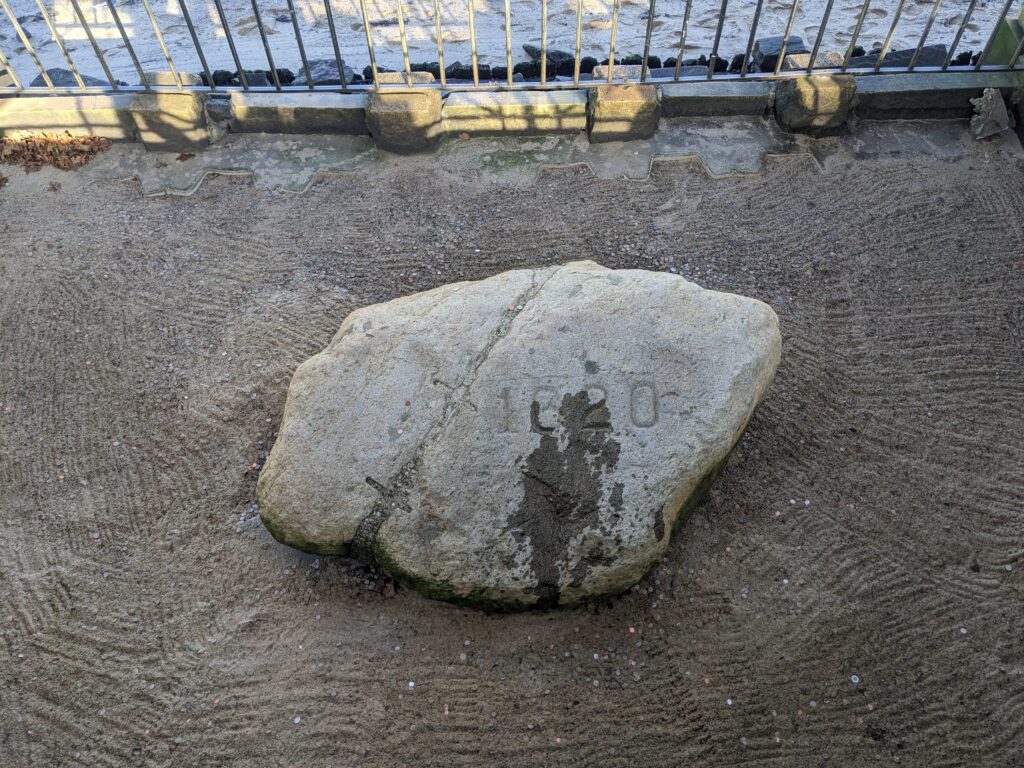
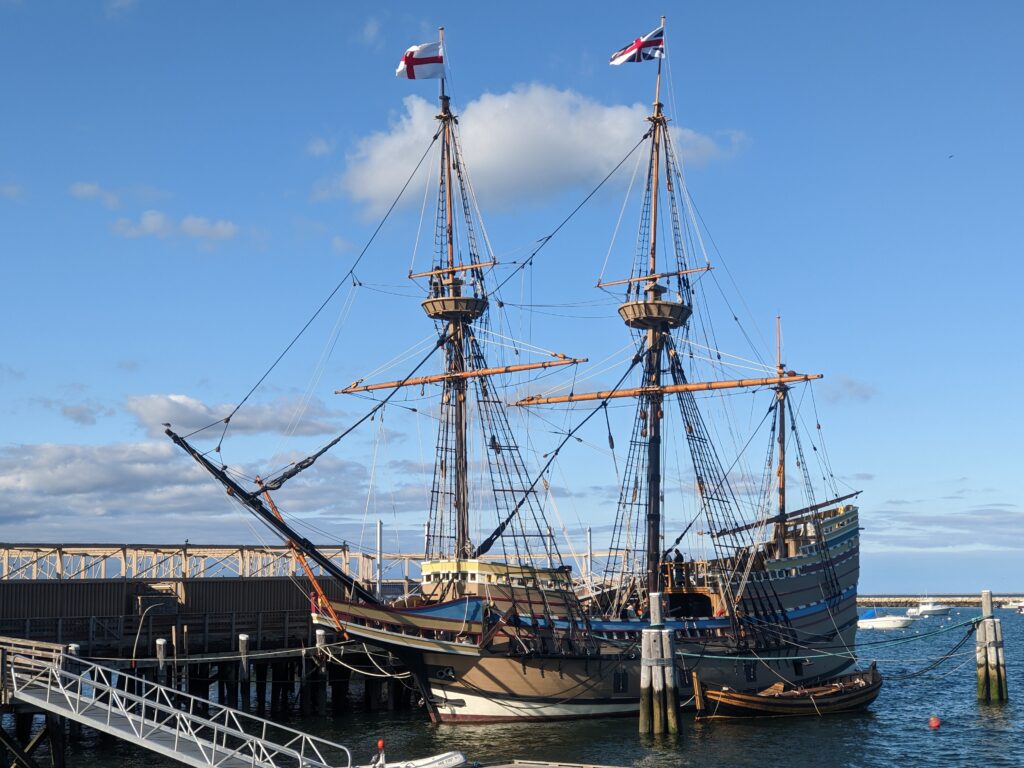
We moved on to Boston, one of the most heralded cities in the US, and fluked a parking spot downtown near the famous Boston Harbour. From there we went up to the Observation Deck of the Observatory Wharf building and had an eagle view of the famous harbour and the modern skyscrapers all around.
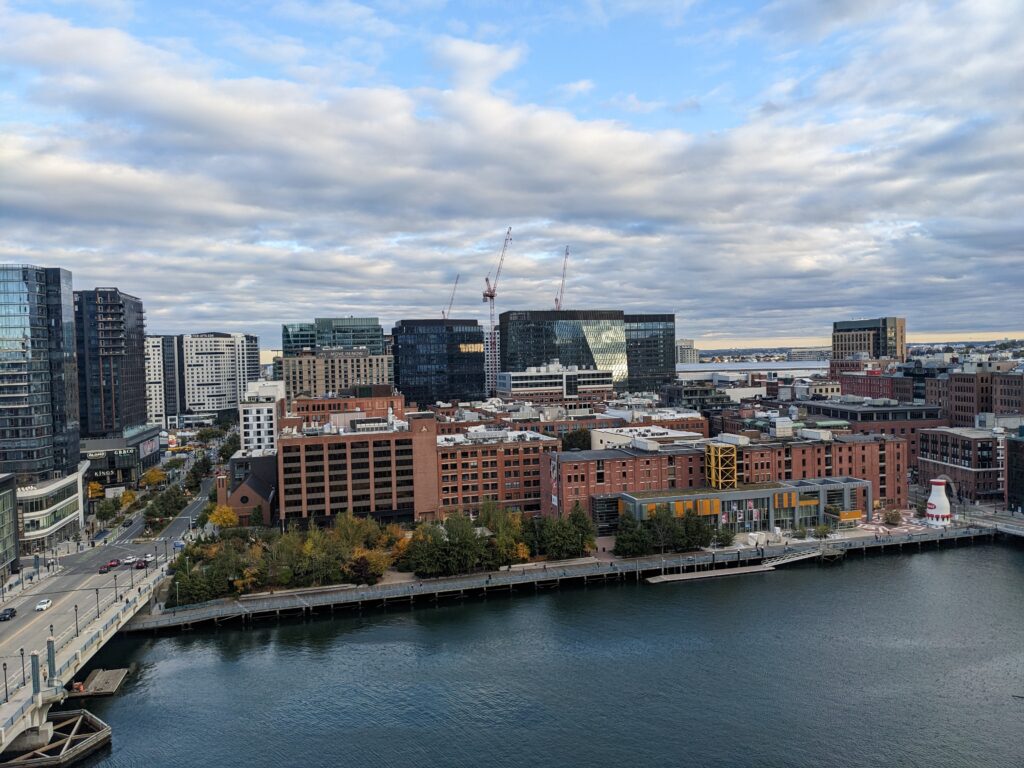
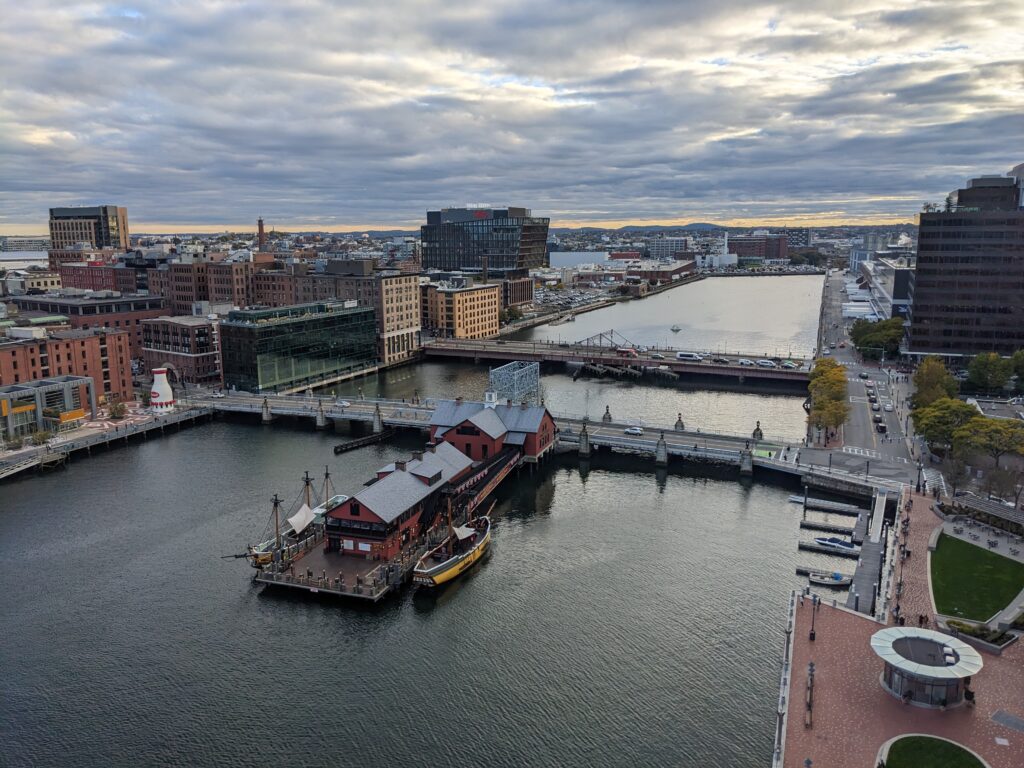
Famous, of course, because it was here in 1773 the locals threw bales of tea into the harbour in defiance of the British taxing them for goods without being their local elected officials. This event, and the high-handed British response, triggered the start of the American Revolution and the eventual democratic independence of the United States. Hooray!
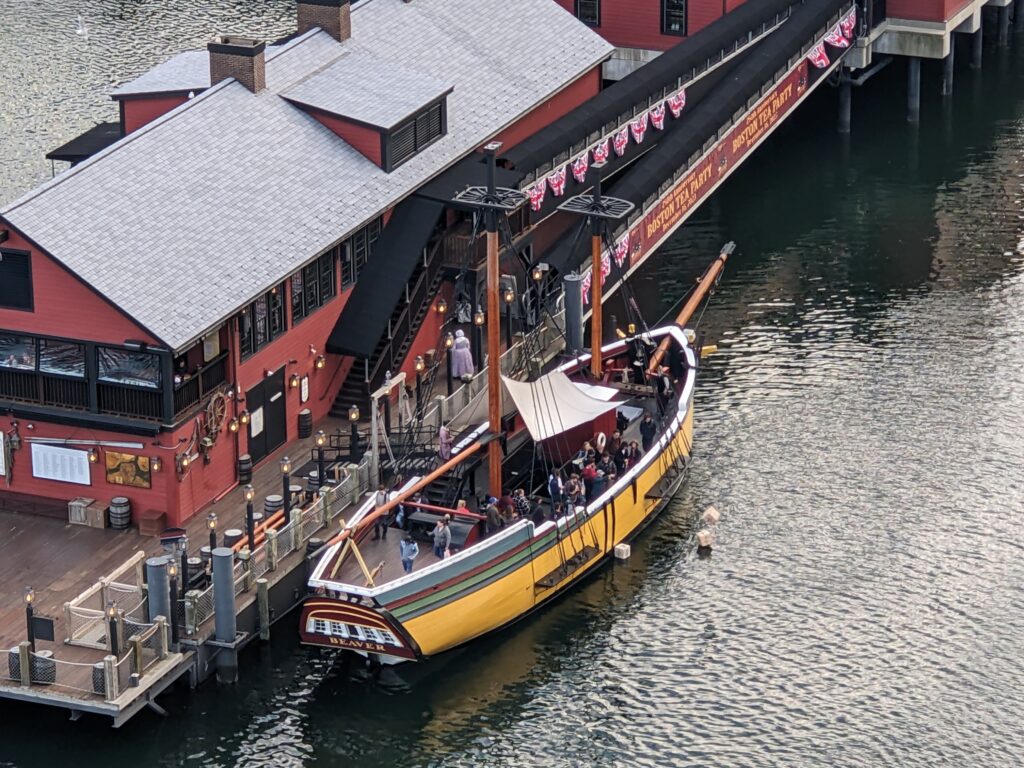
Having camped the last three nights in carparks near the water, this night we chose a truck stop near the Interstate, tucked in behind a McDonalds. If this doesn’t sound romantic, well, it isn’t, but these spots work for us, very safe and allow us to move where we want and stay where we want.
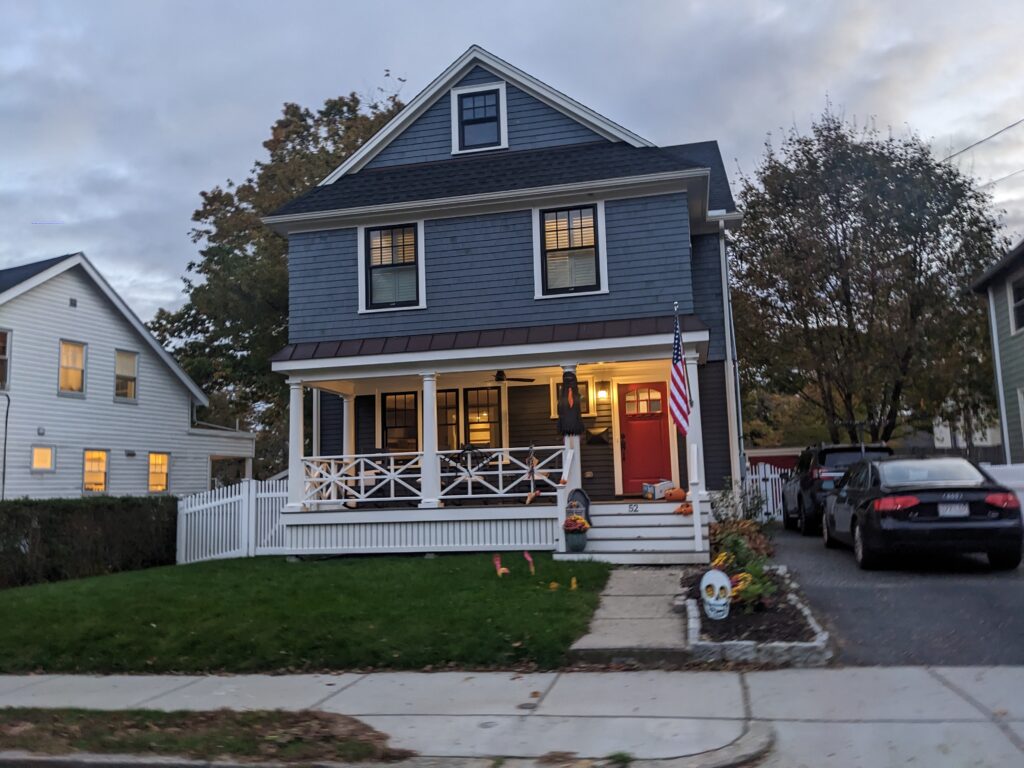
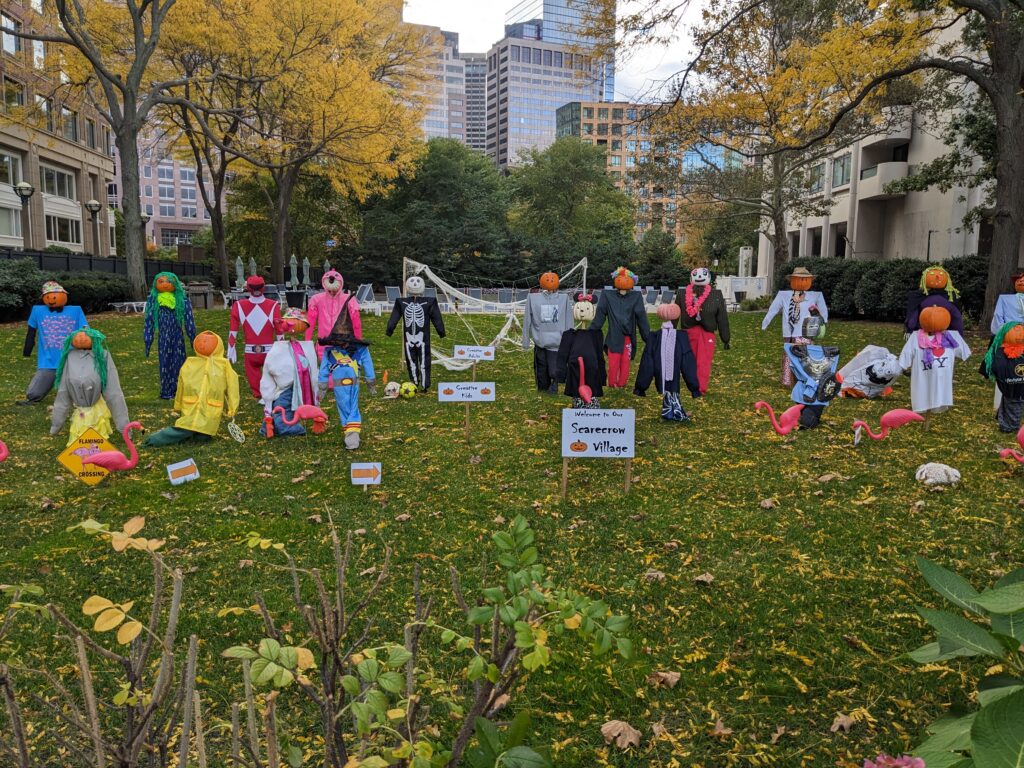
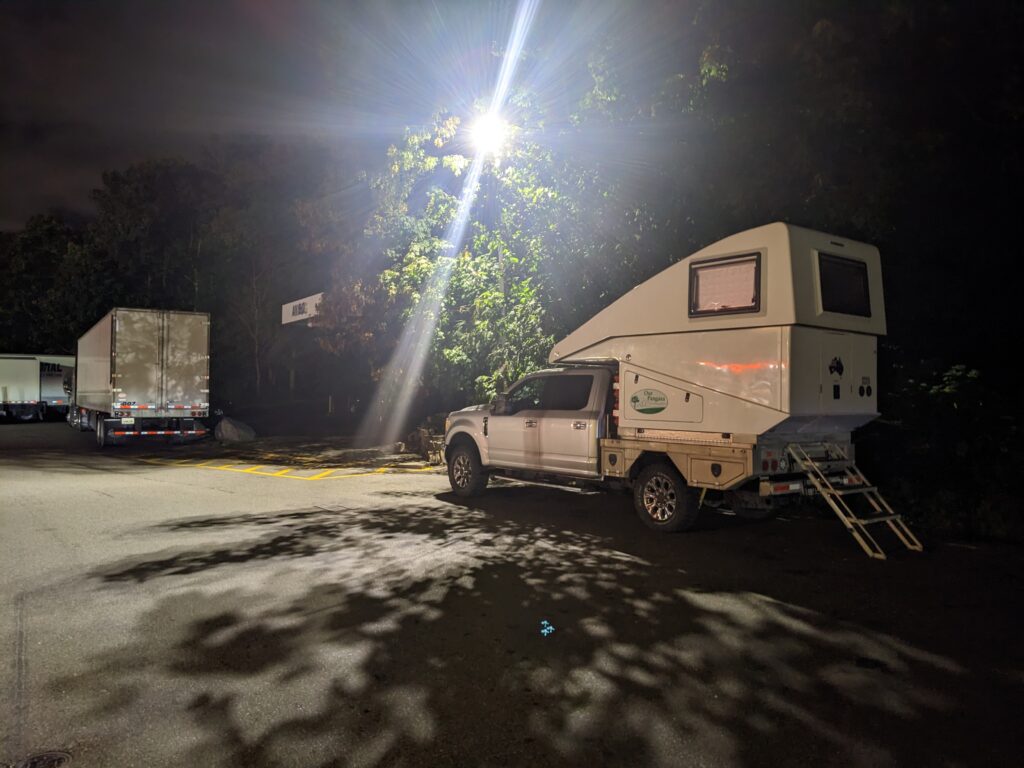
We spent the next two days driving west, mainly on Hwy 20, through western Massachusetts and then across the northern stretches of the state of New York. We dine out on seeing parts of a country that perhaps not all visitors get to see and this drive was a perfect example of that. We passed through small towns, past strip malls, through the usual road construction and some beautiful countryside.
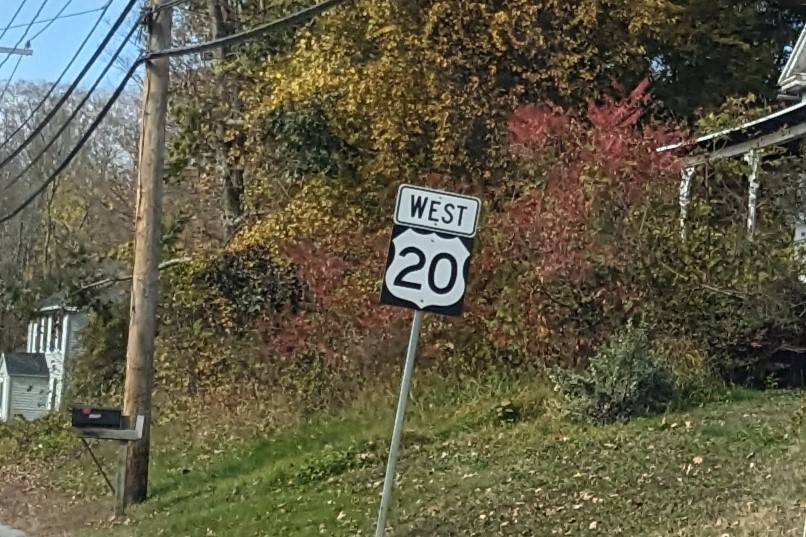
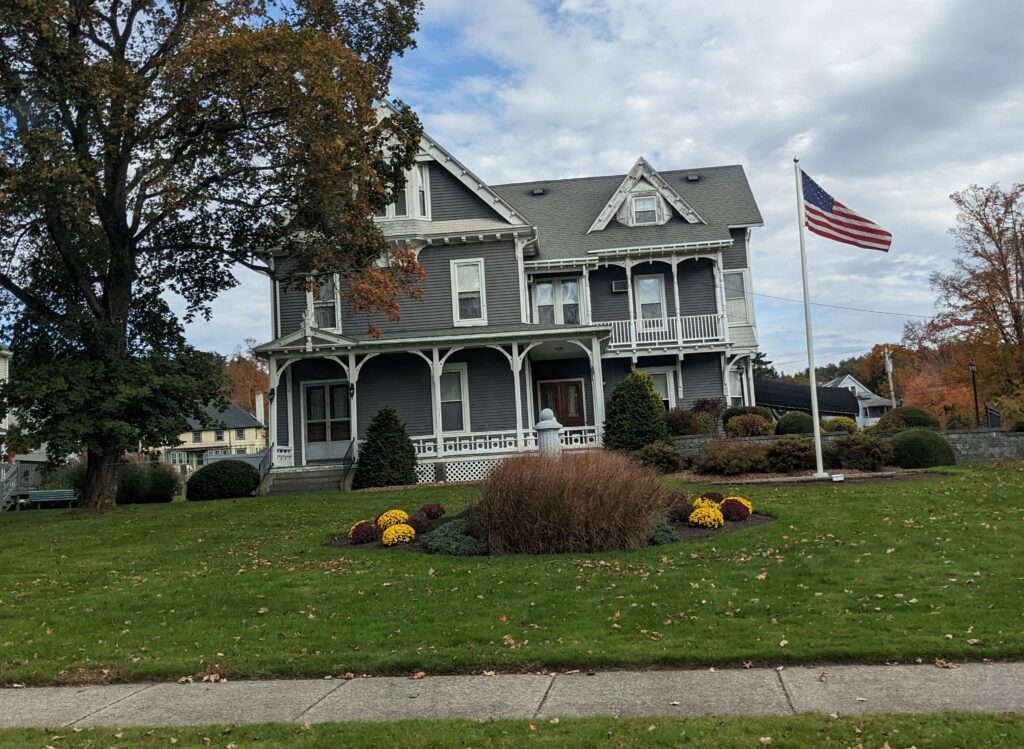
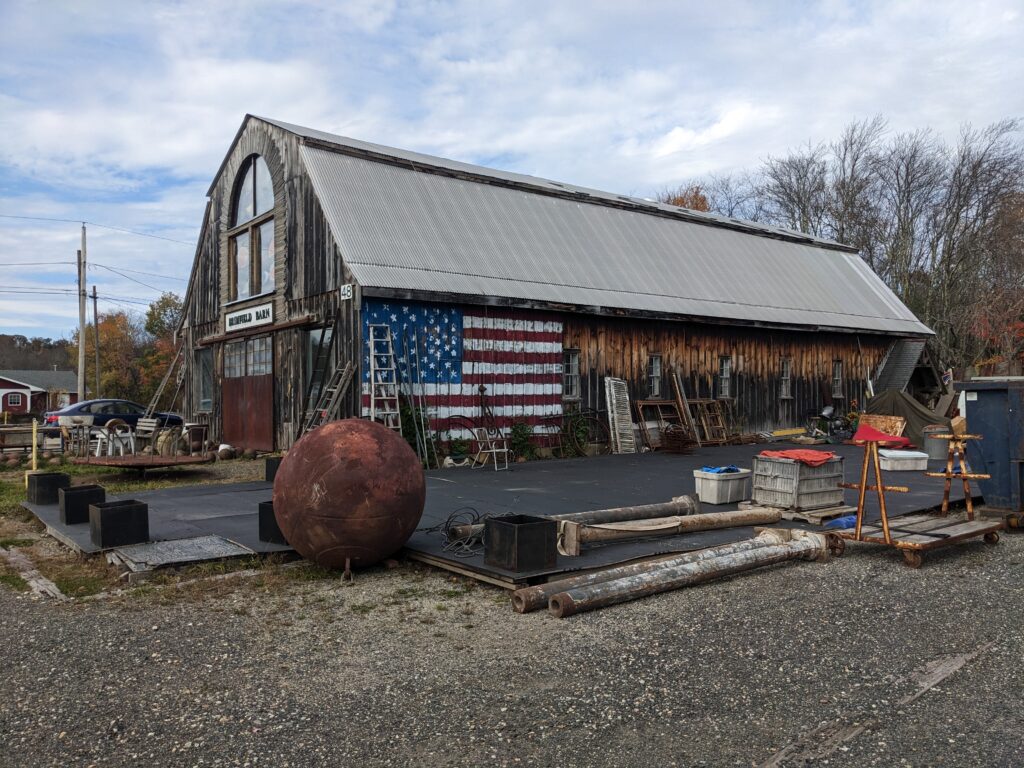
The hills were turning their vibrant fall colours, wonderful timber homes sported scary Halloween decorations, there were lakes reflecting the yellows and oranges of the day, even a river with a beaver dam and beaver lodge. Most campsites and state parks were closed for the season but we found one campground still open who let us have showers and we stopped at a Walmart, one of a dozen we saw on the day, to buy another warm blanket for the bed. After all, winter is coming.
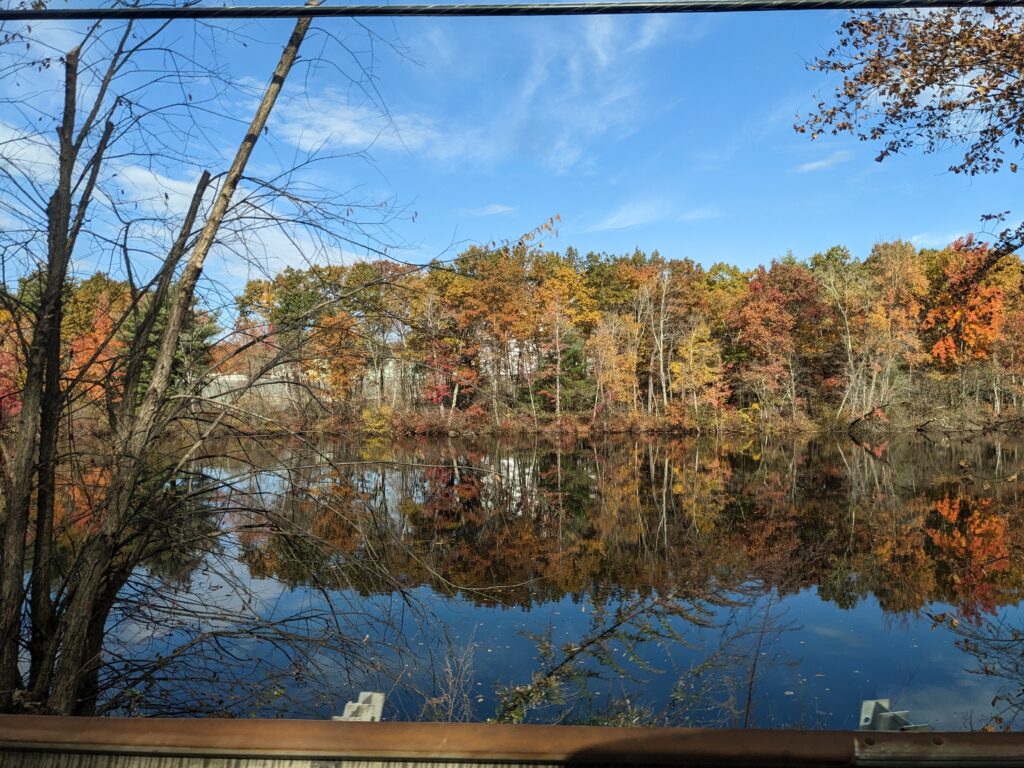
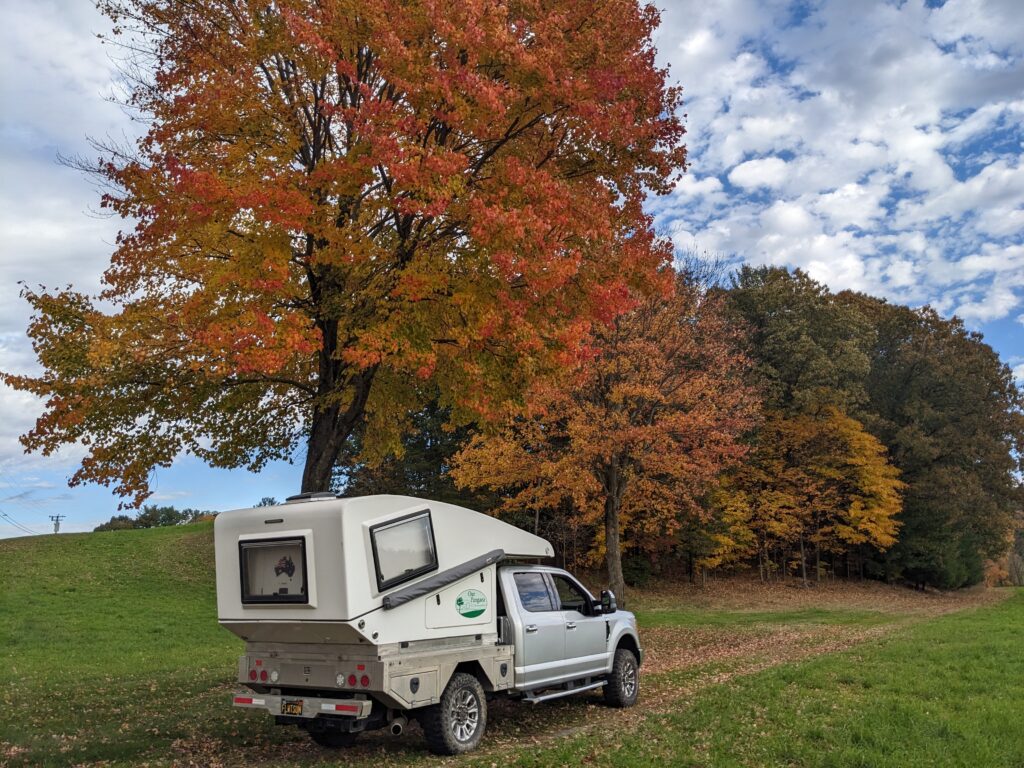
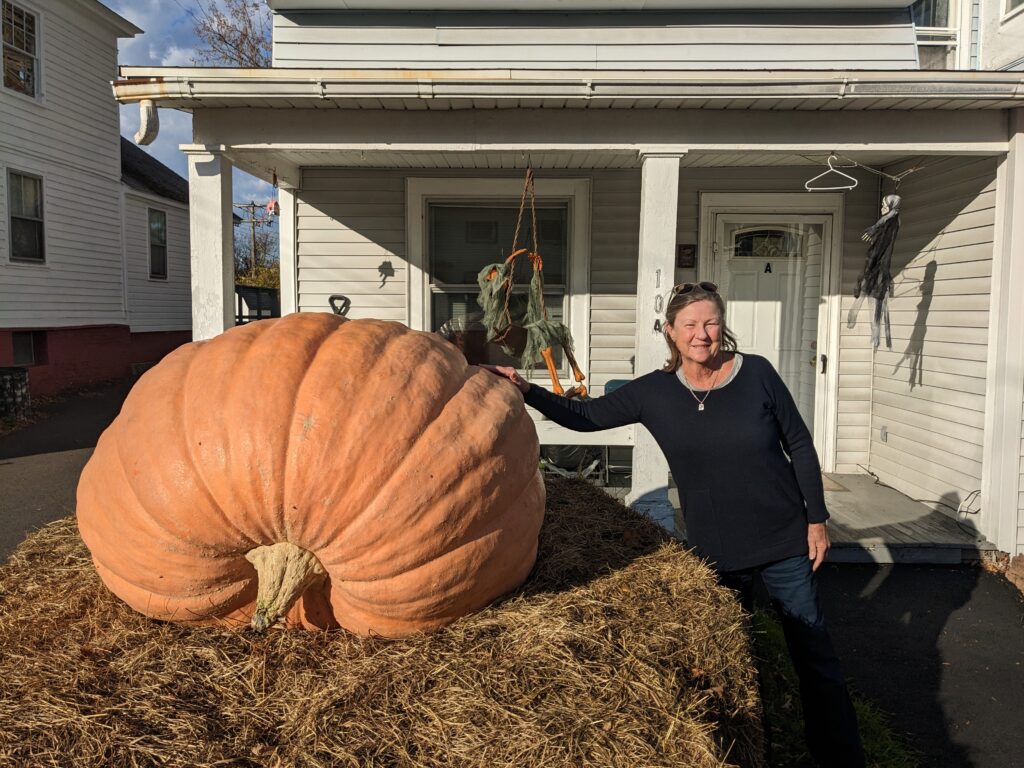
We camped the night in Glimmerglass State Park, tucked away behind trees at Beaver Pond which was infinitely better than any truck stop we’d been to before, and the next morning continued our quest to drive the length of Highway 20 across upstate New York.
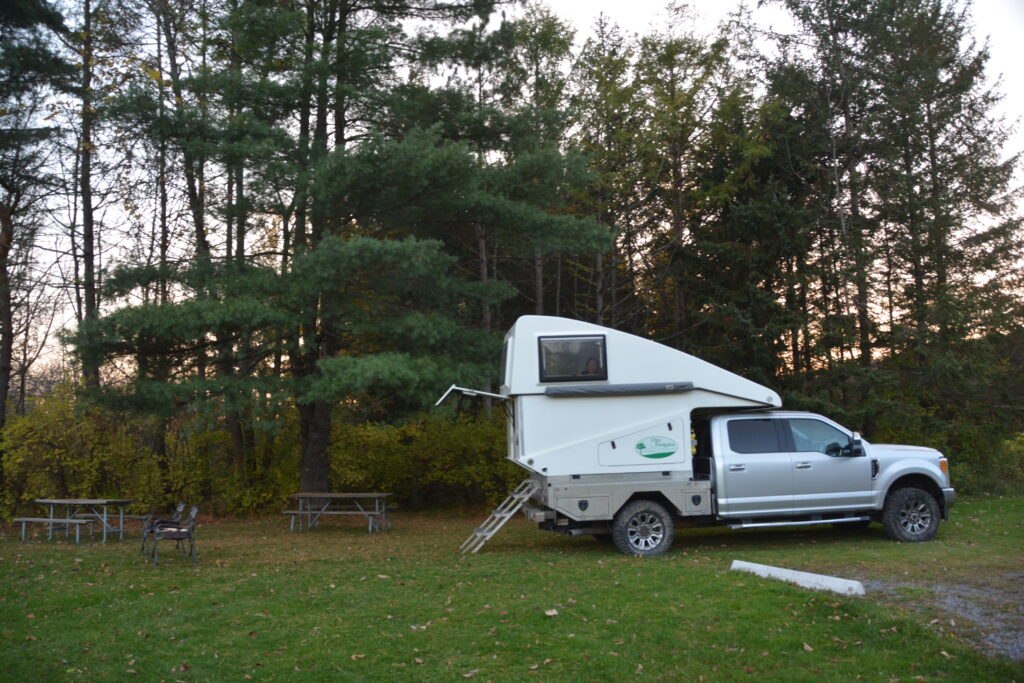
We revelled in this two-lane country drive across beautiful rolling farm lands with their classic barns and silos, through small towns with their picture-perfect timber homes and excessive Halloween decorations and around the Finger Lakes district which features a series of very long and thin lakes running north-south in the middle of the state.
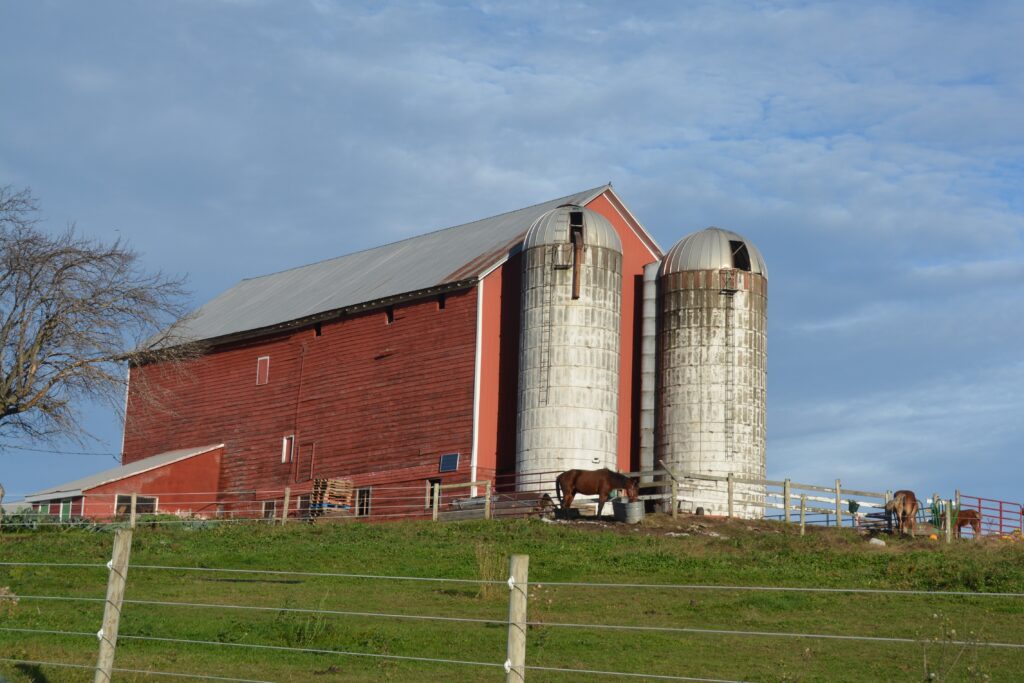
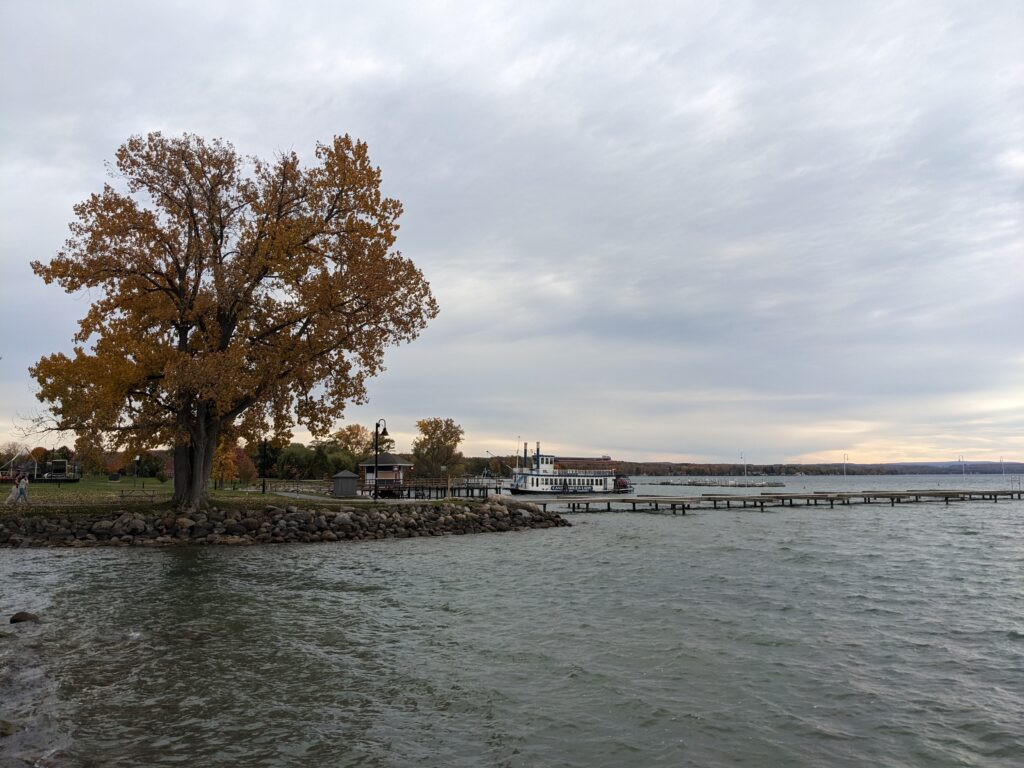
We passed through towns like Seneca Falls, birthplace of women’s rights in America, and Waterloo, birthplace of Memorial Day in America. We had lunch on the shores of one of the Finger Lakes and stopped for a million photos.
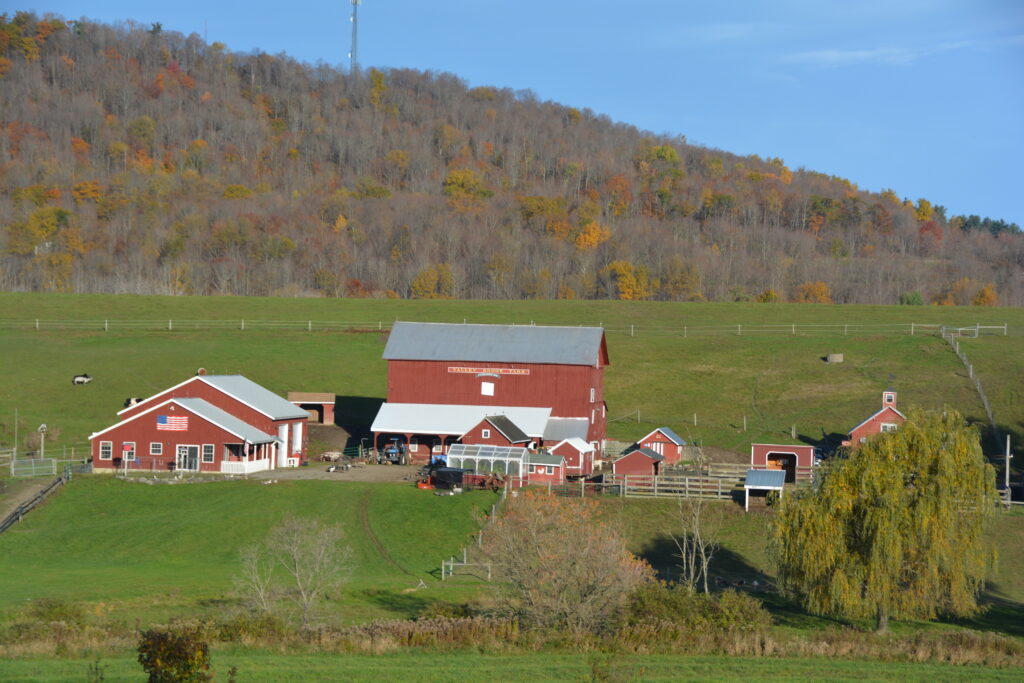
But all good things must come to an end and eventually Highway 20 had served it’s purpose and dropped us outside of the city of Buffalo and very close to one of the most famous tourist sites in the United States – Niagara Falls.
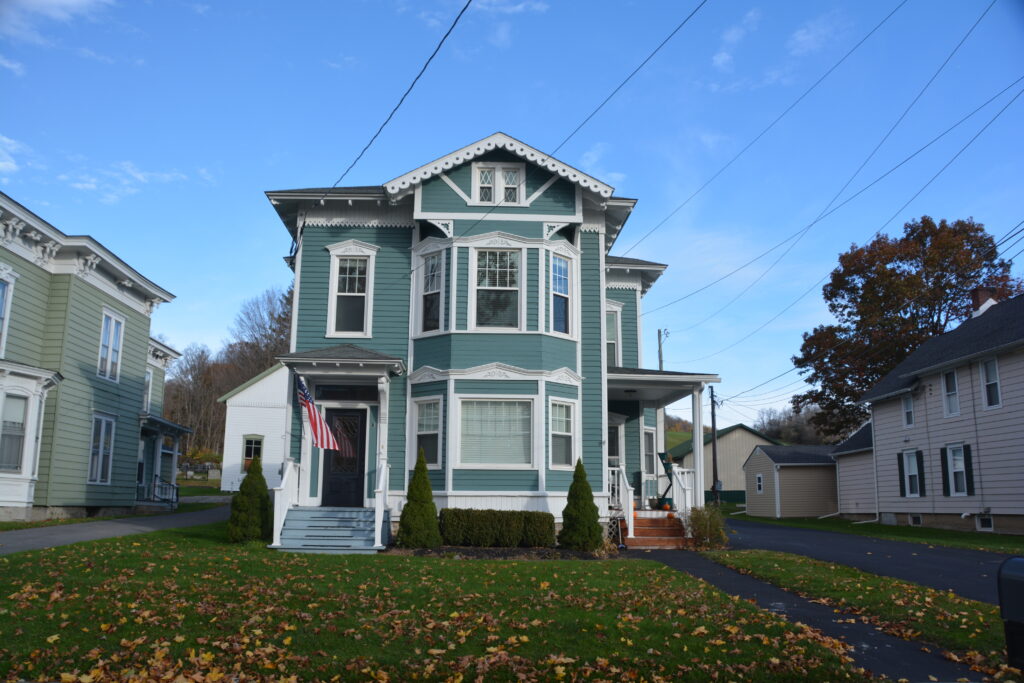
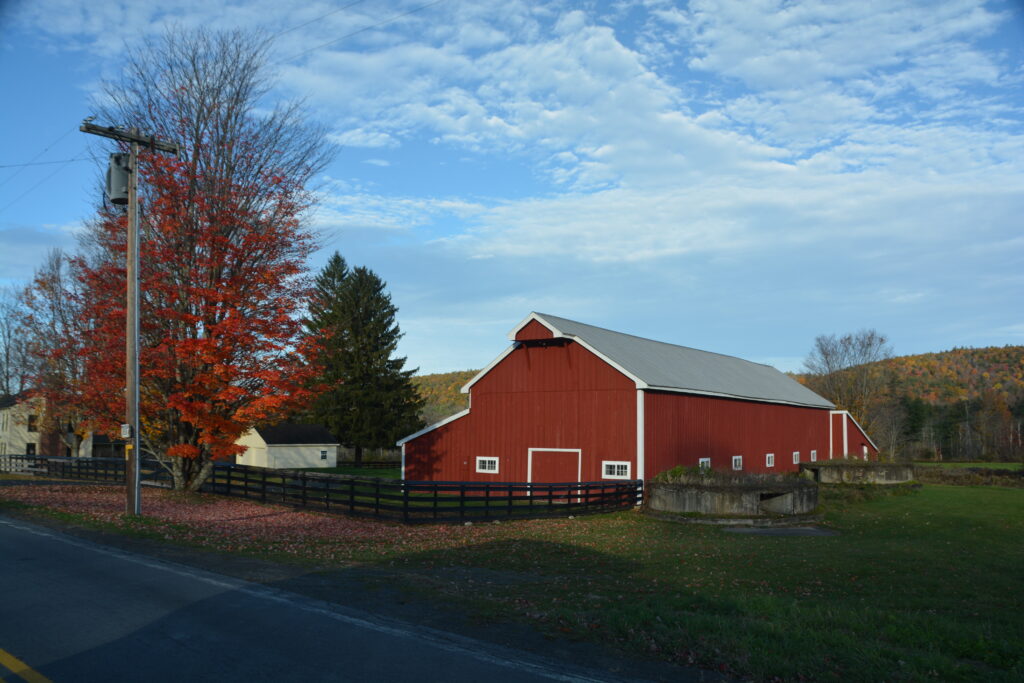
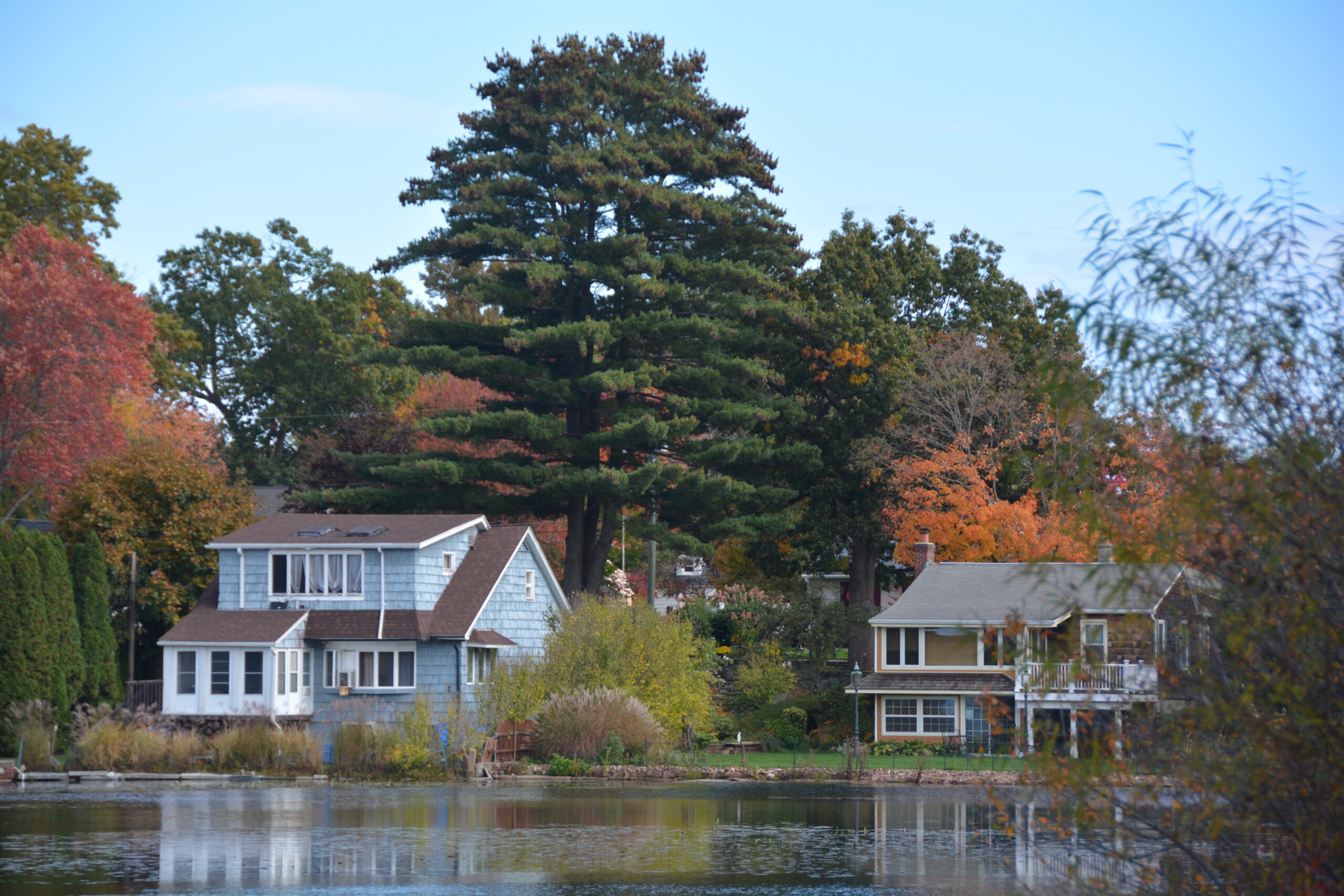
Loving it, but sad that you are edging closer to the Sunset of your travels. Keep discovering, and continue to make memories.
Lots of love to you both
xoxo
Hi Anne, the sun is setting on Follow the Sun but we hope to keep discovering along the way. Cheers.